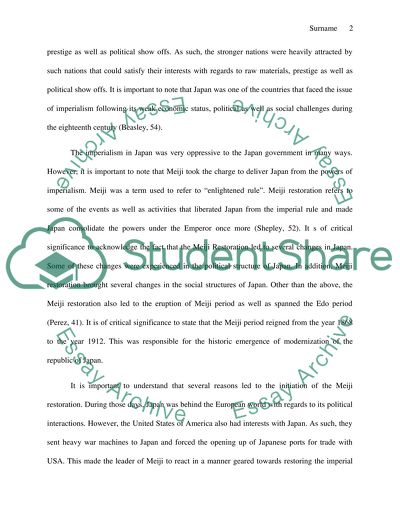Cite this document
(“Japan: Meiji Restoration and the rise of Japan (1853-1905) Research Paper”, n.d.)
Retrieved from https://studentshare.org/history/1669540-japan-meiji-restoration-and-the-rise-of-japan-1853-1905
Retrieved from https://studentshare.org/history/1669540-japan-meiji-restoration-and-the-rise-of-japan-1853-1905
(Japan: Meiji Restoration and the Rise of Japan (1853-1905) Research Paper)
https://studentshare.org/history/1669540-japan-meiji-restoration-and-the-rise-of-japan-1853-1905.
https://studentshare.org/history/1669540-japan-meiji-restoration-and-the-rise-of-japan-1853-1905.
“Japan: Meiji Restoration and the Rise of Japan (1853-1905) Research Paper”, n.d. https://studentshare.org/history/1669540-japan-meiji-restoration-and-the-rise-of-japan-1853-1905.


